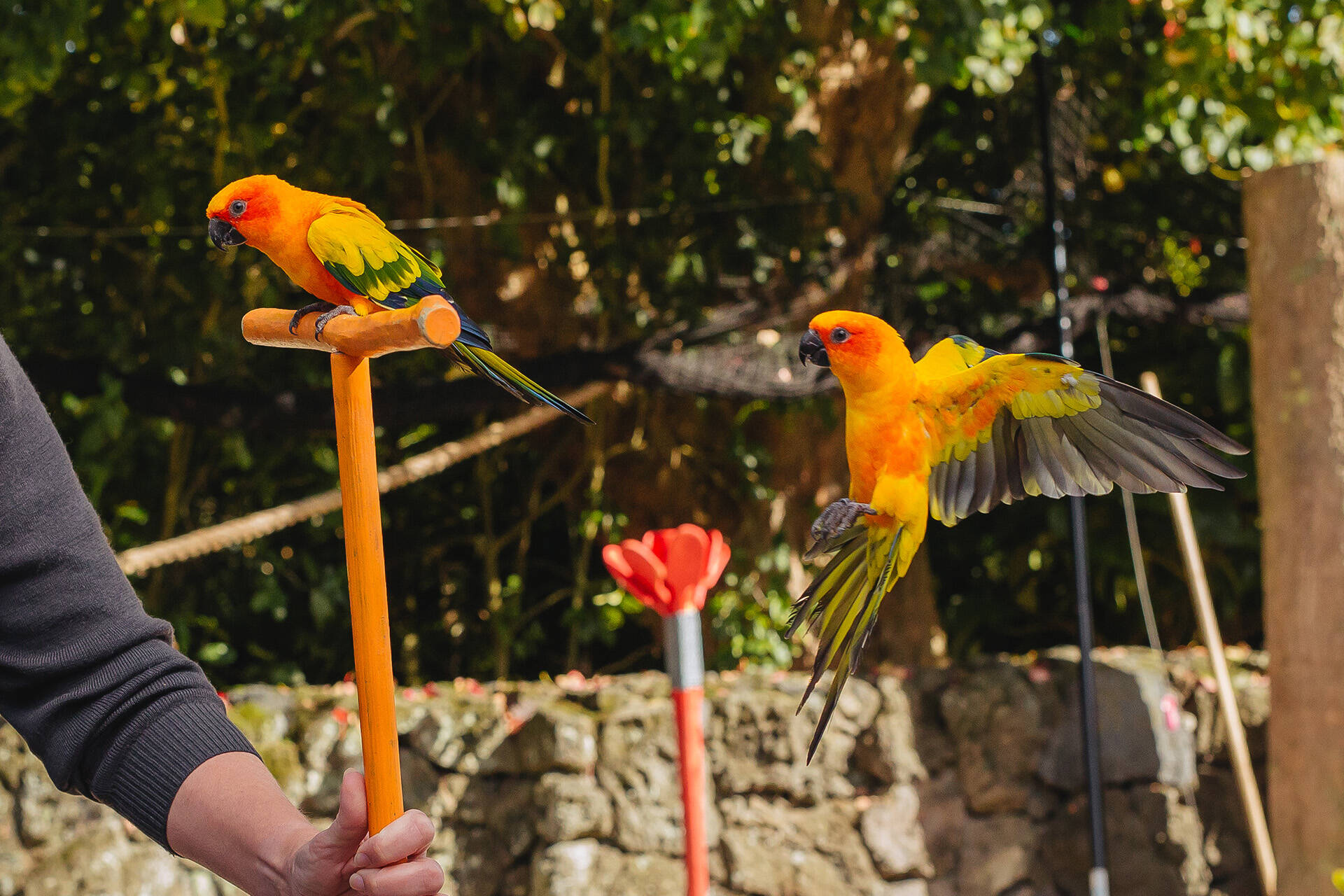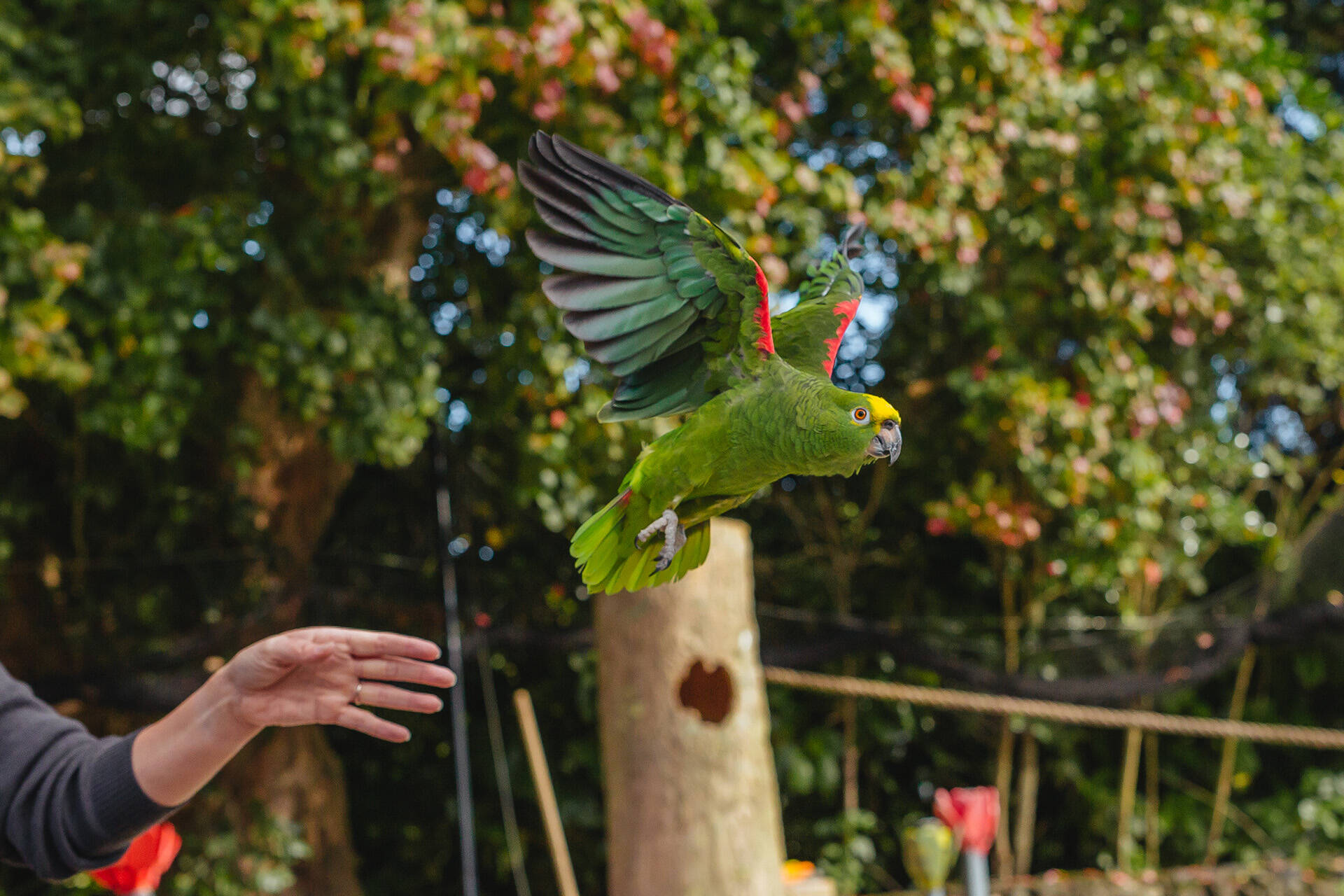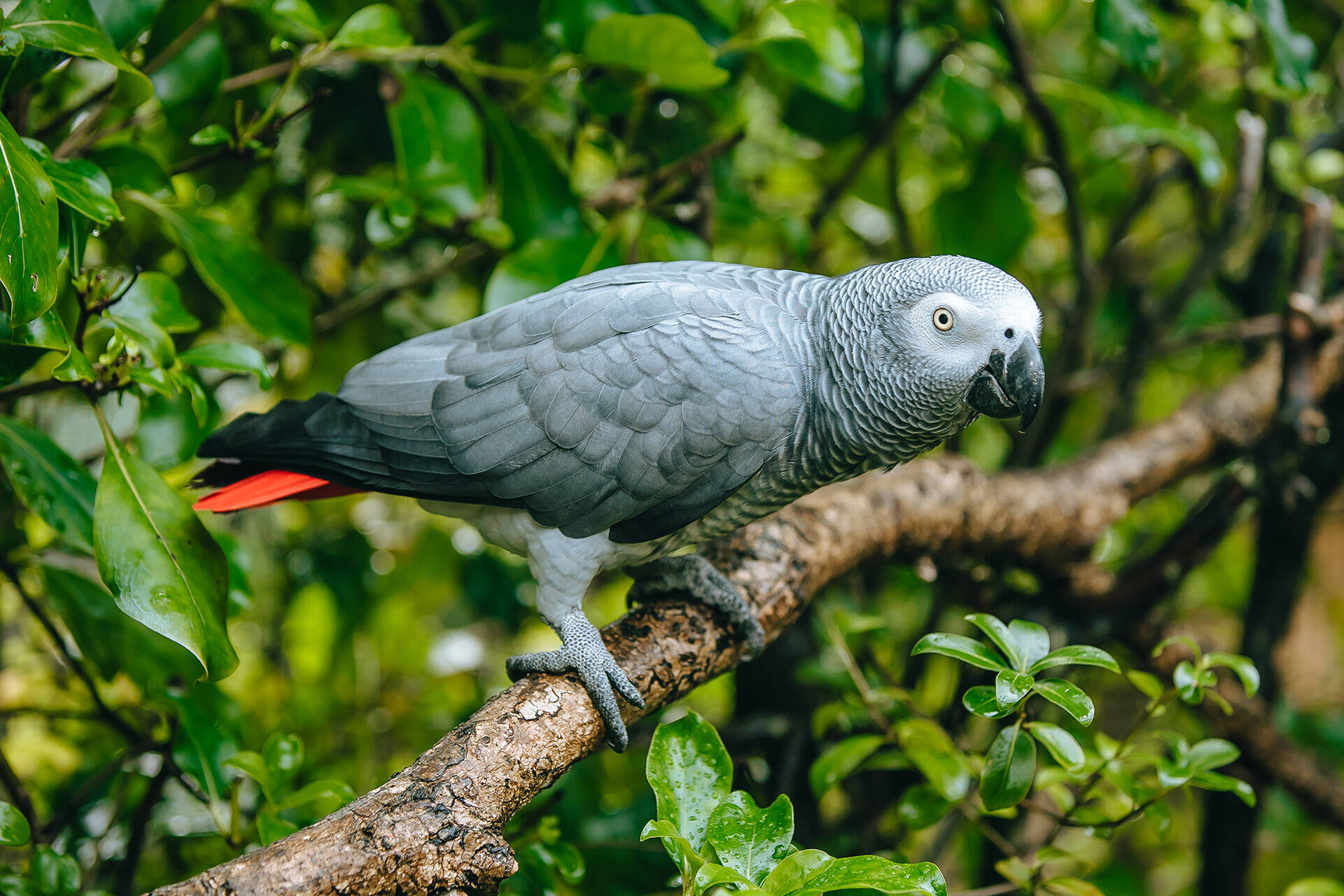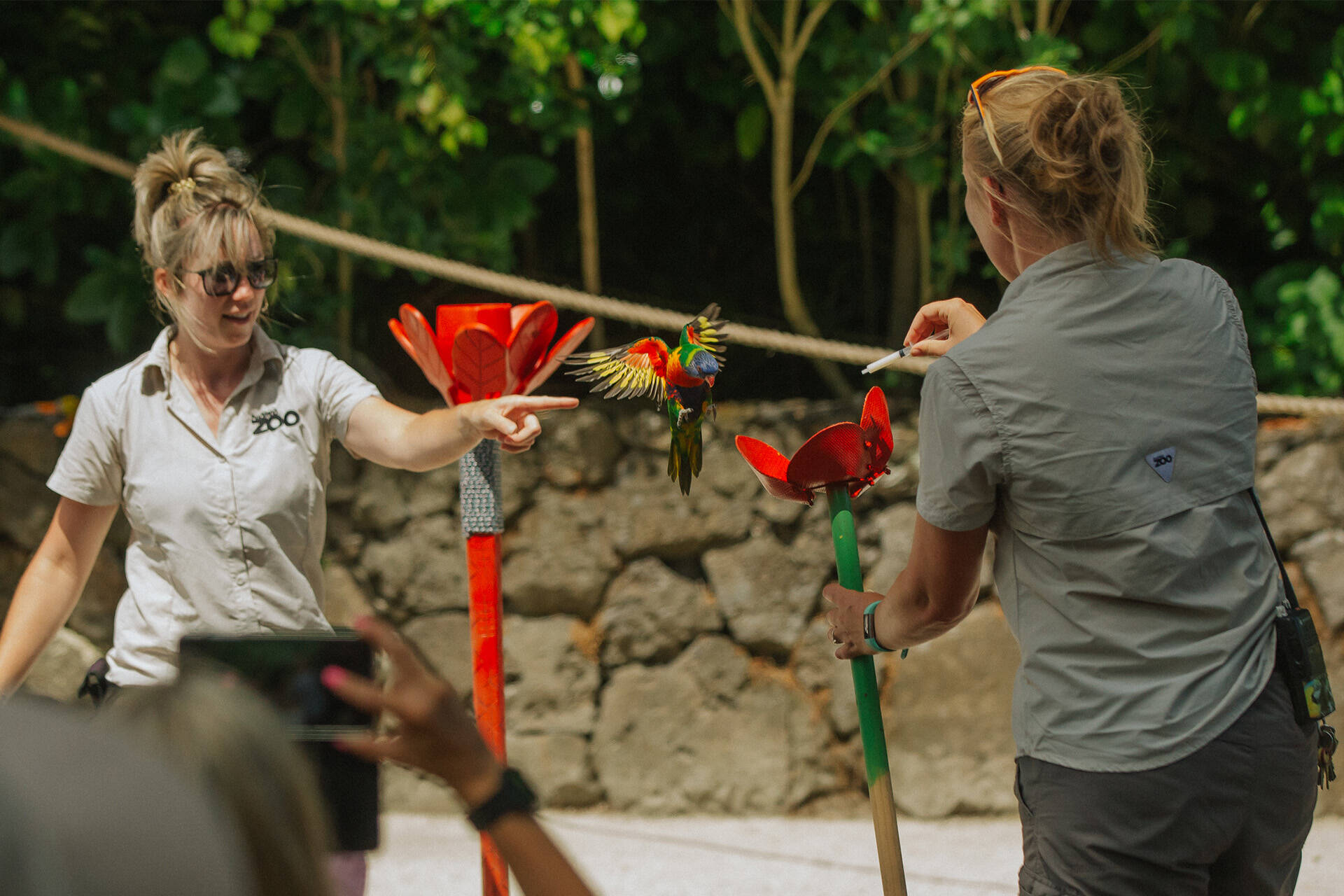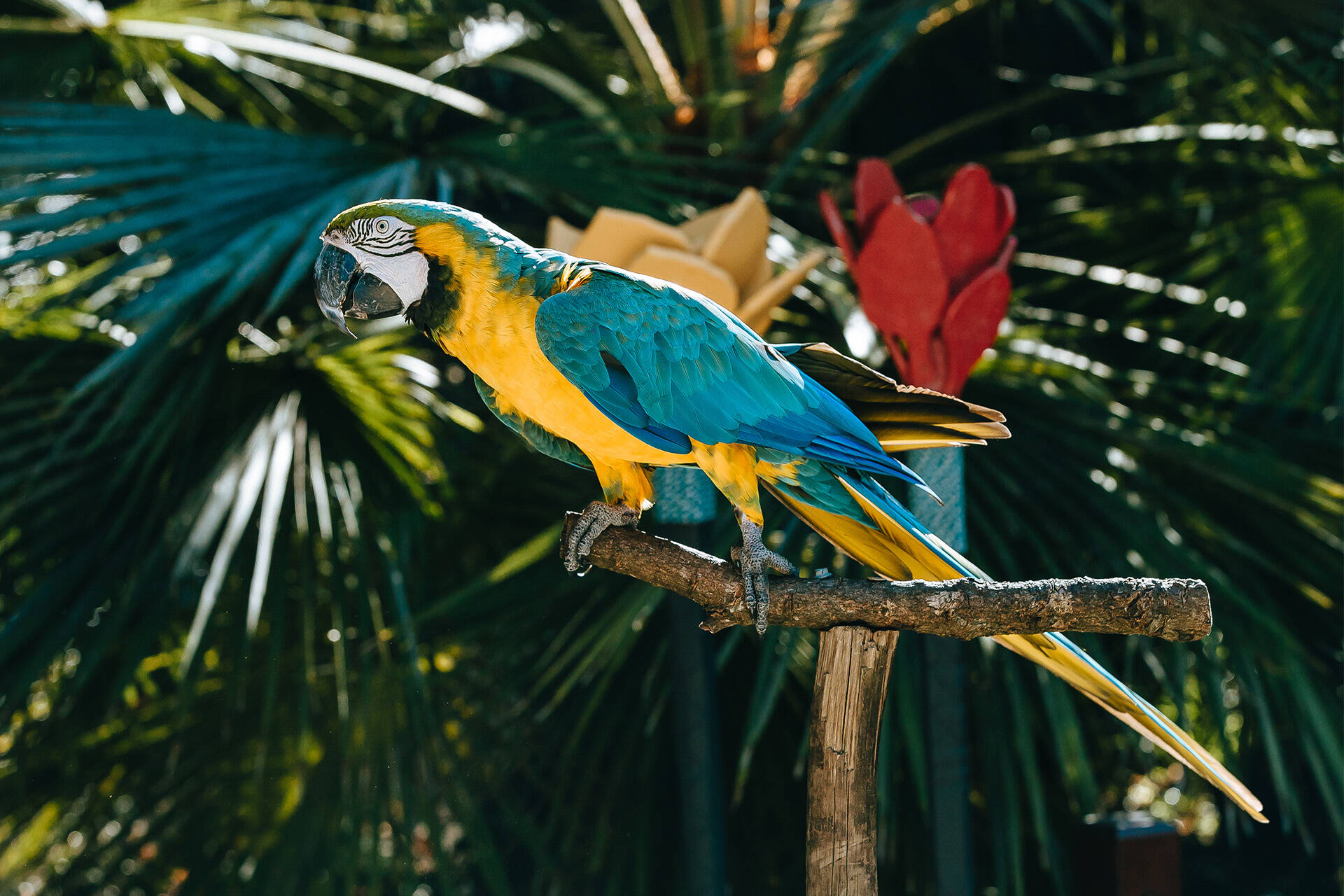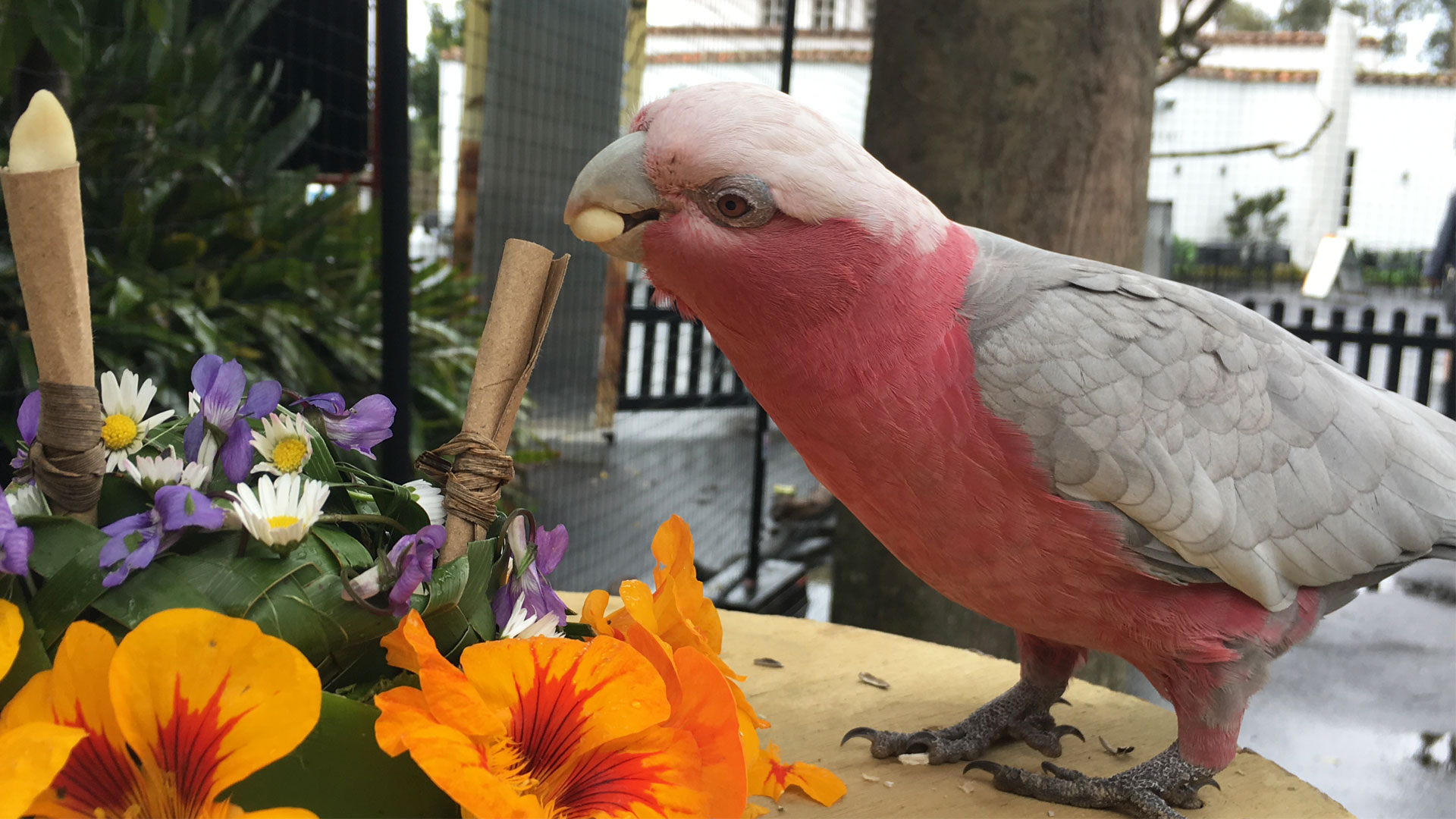Connecting our Zoo visitors with wildlife is one of the key roles of our animal experience team – as once you care for a species, you’re more likely to want to take positive actions to conserve it. Our Flight School inspires awe and delight as tamariki and adults alike connect with a variety of fascinating birds like galah, sun conures, African grey parakeets and macaws, and learn about their special adaptations.
You might learn how a galah lines its nest with leaves or how and why a macaw would collect clay in the wild. Encouraging these birds to display their natural behaviours teaches our visitors about these parrots and the important roles they play in their wild environments. Our animal experiences team use positive reinforcement training to build up these intelligent birds’ skills and confidence and they can choose whether they want to participate on the day.




